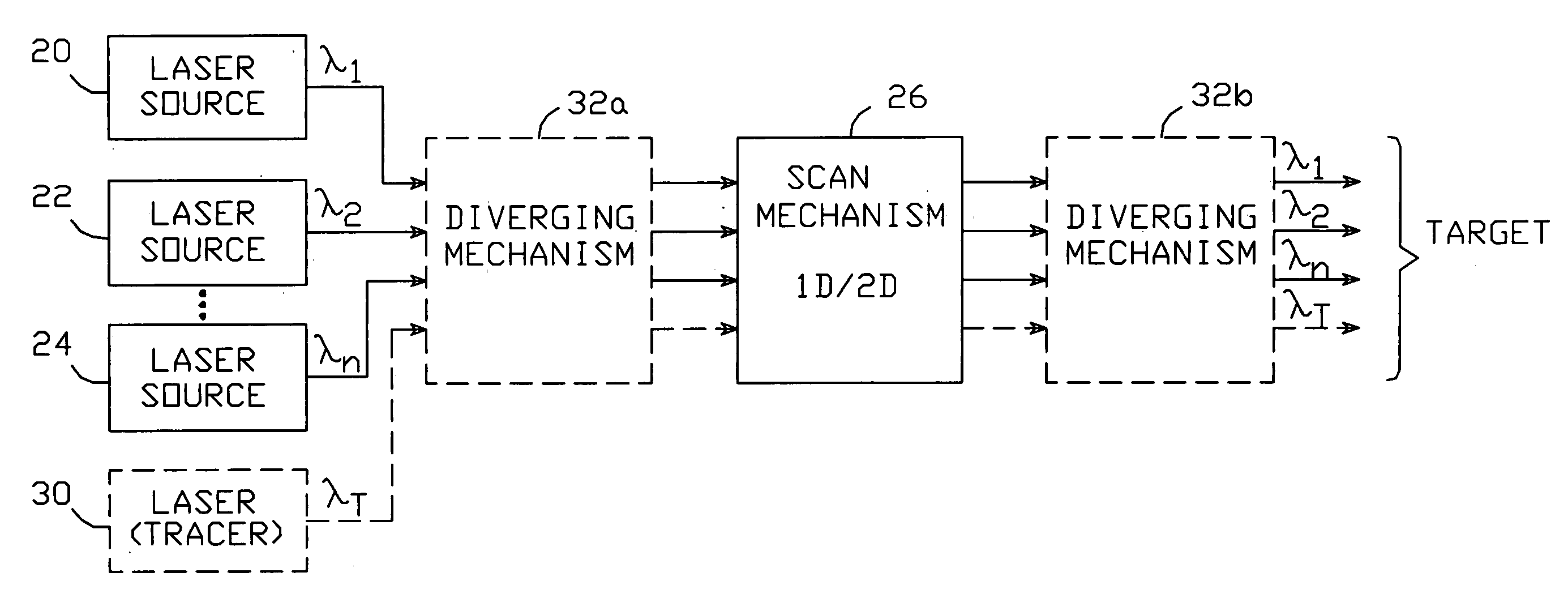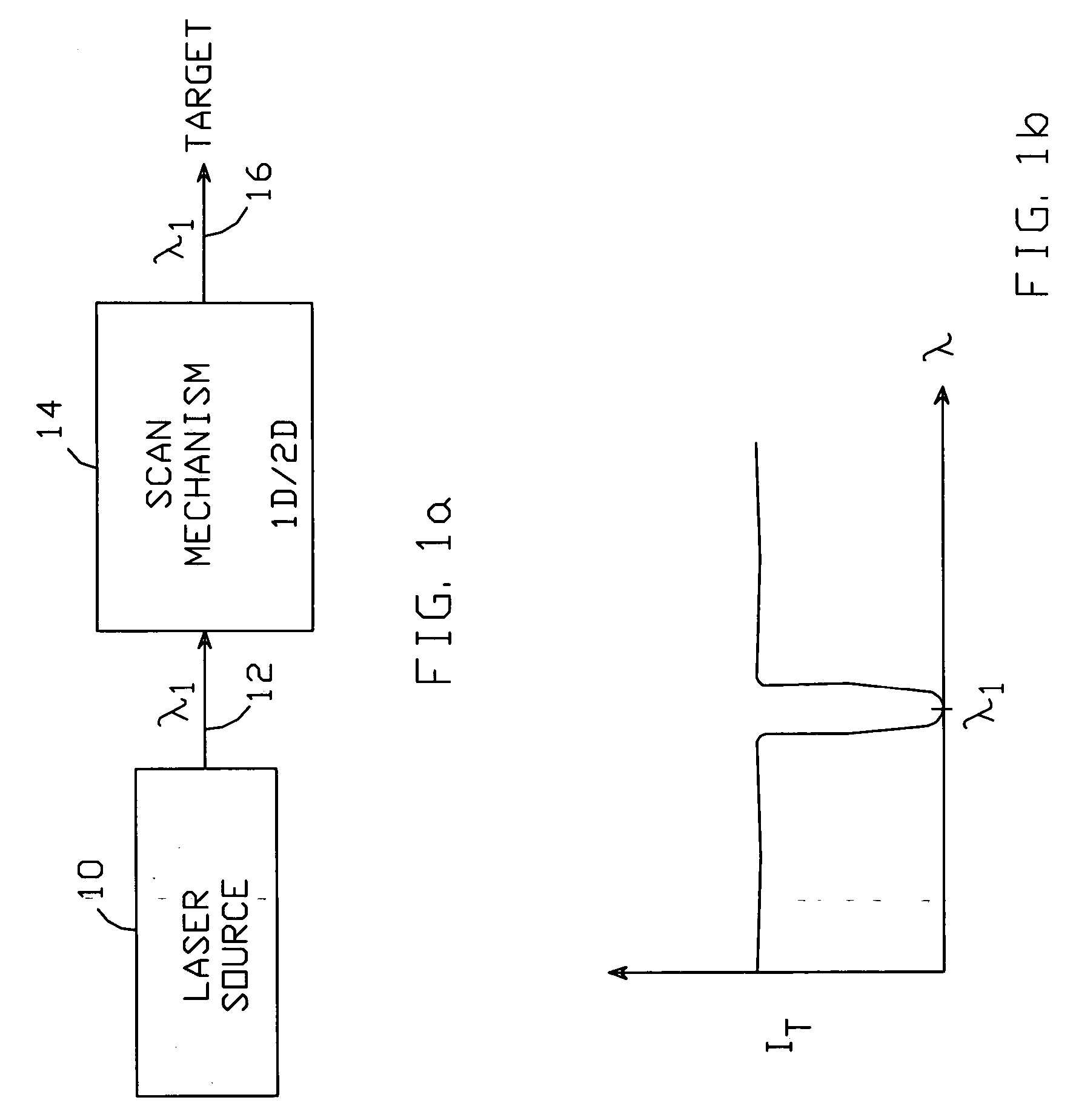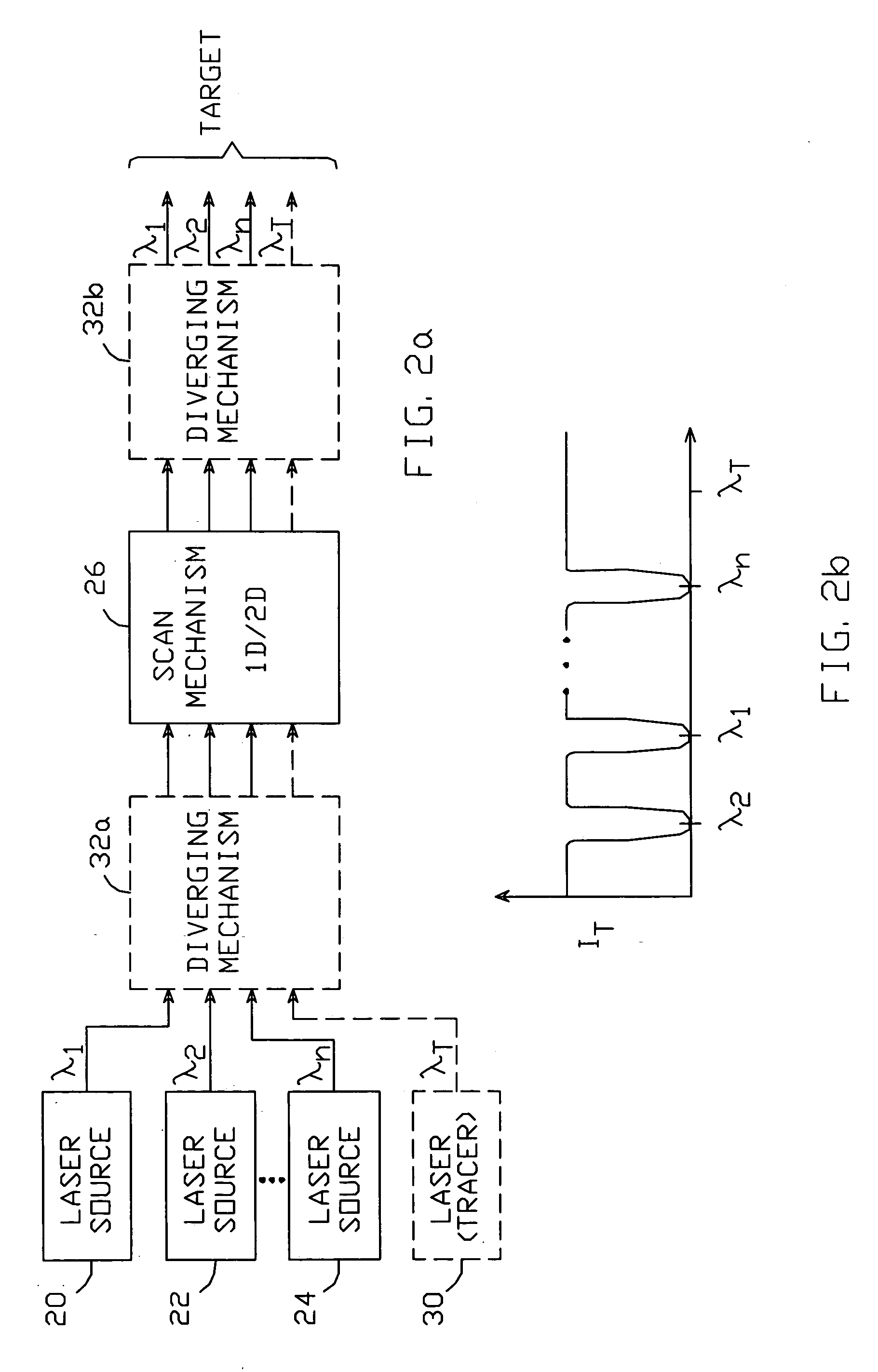Non-lethal laser-based disorientation system
a laser-based and non-lethal technology, applied in the direction of weapons, weapons launchers, weapons, etc., can solve the problem that no light- or laser-based system provides a means of protecting those employing such methods, and achieve the effect of limiting the fluency of light and disorienting and/or dazzleing opponents
- Summary
- Abstract
- Description
- Claims
- Application Information
AI Technical Summary
Benefits of technology
Problems solved by technology
Method used
Image
Examples
Embodiment Construction
[0017] The present non-lethal laser-based disorientation system comprises two portions: a laser light generation portion, and an eye protection portion. The laser light generation portion is intended to provide visible laser light having at least one predetermined wavelength. The laser light is directed to illuminate a target area, with the light having a fluence sufficient to disorient or dazzle a person within the target area whose vision is unprotected—but low enough to avoid causing permanent eye damage. The eye protection portion is matched to the laser light generation portion, such that the protection system substantially blocks light at the predetermined narrow wavelength, while being substantially transparent to visible light at other wavelengths. This enables the operators of the system to direct the laser light as needed, without them or their colleagues being dazzled or disoriented themselves. The laser light must be centered about wavelengths in the visible spectrum, so...
PUM
 Login to View More
Login to View More Abstract
Description
Claims
Application Information
 Login to View More
Login to View More - R&D
- Intellectual Property
- Life Sciences
- Materials
- Tech Scout
- Unparalleled Data Quality
- Higher Quality Content
- 60% Fewer Hallucinations
Browse by: Latest US Patents, China's latest patents, Technical Efficacy Thesaurus, Application Domain, Technology Topic, Popular Technical Reports.
© 2025 PatSnap. All rights reserved.Legal|Privacy policy|Modern Slavery Act Transparency Statement|Sitemap|About US| Contact US: help@patsnap.com



